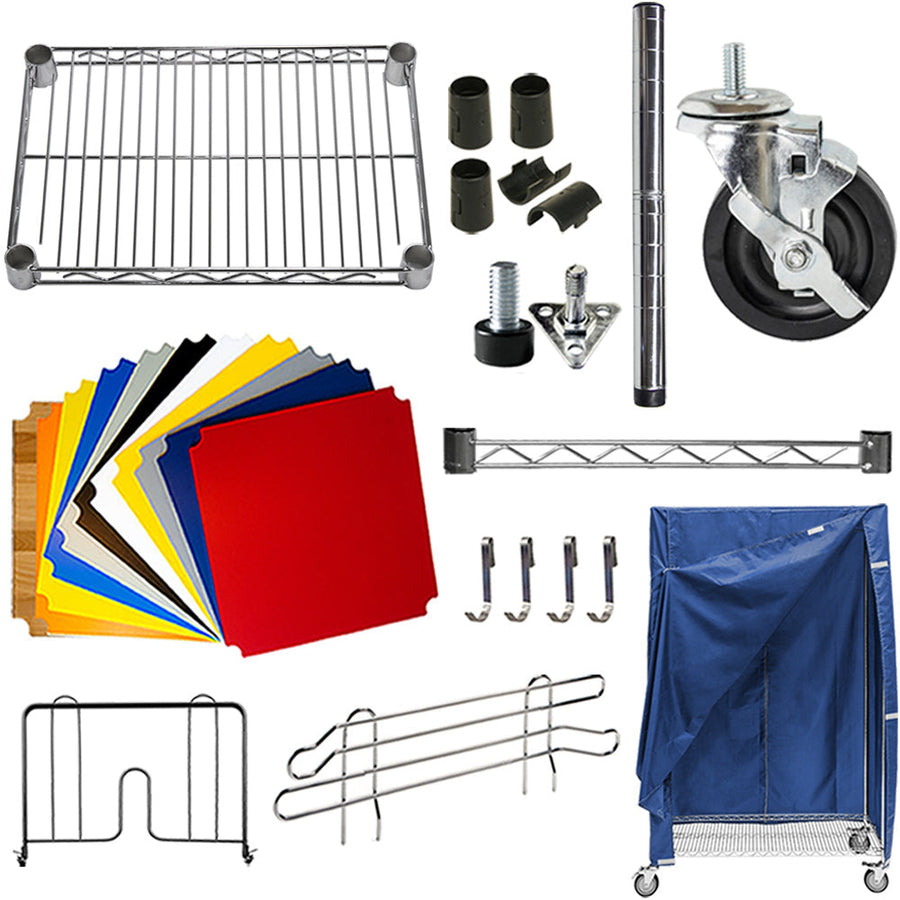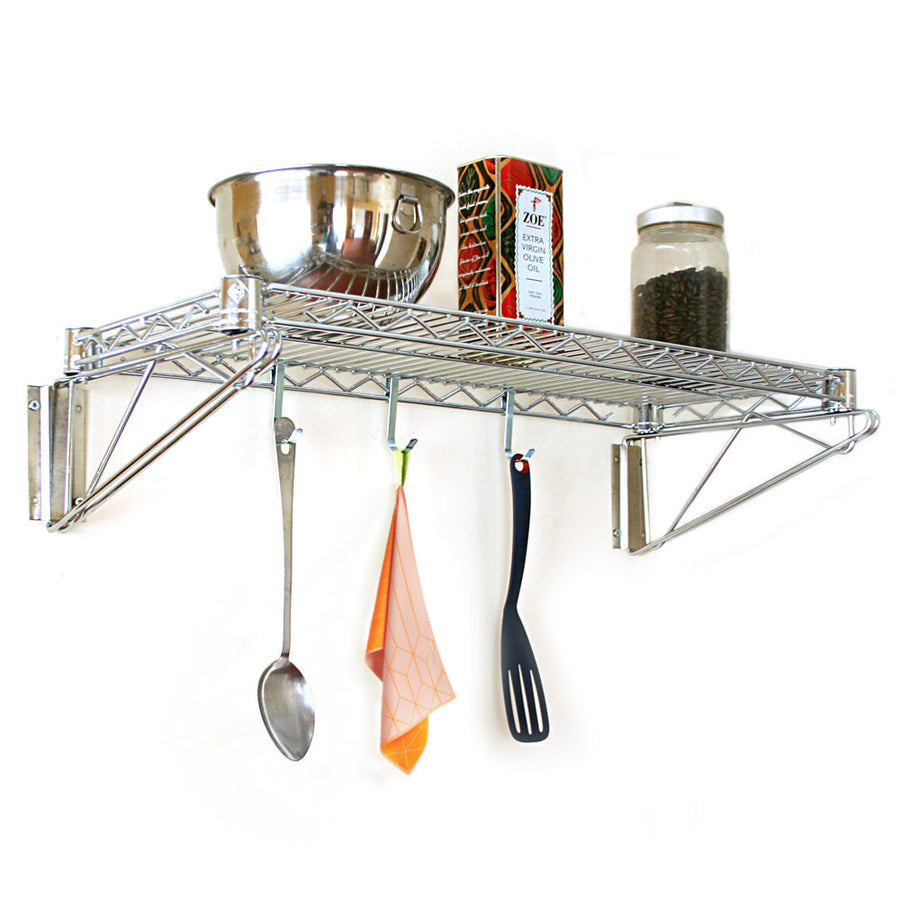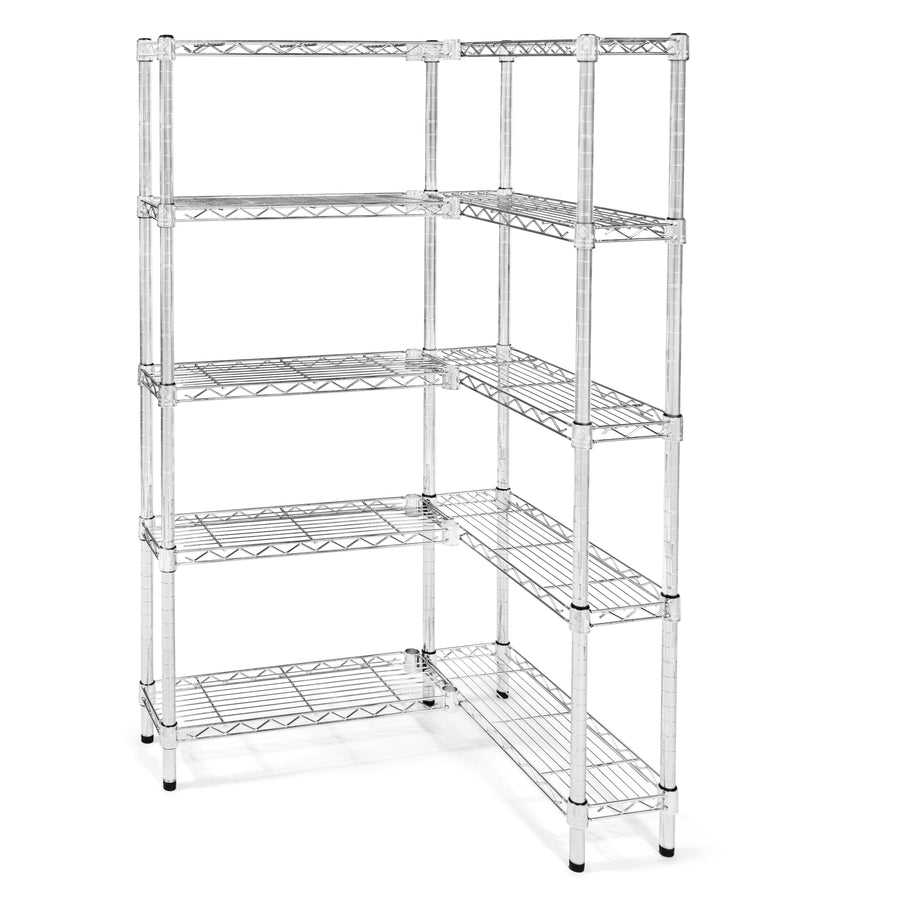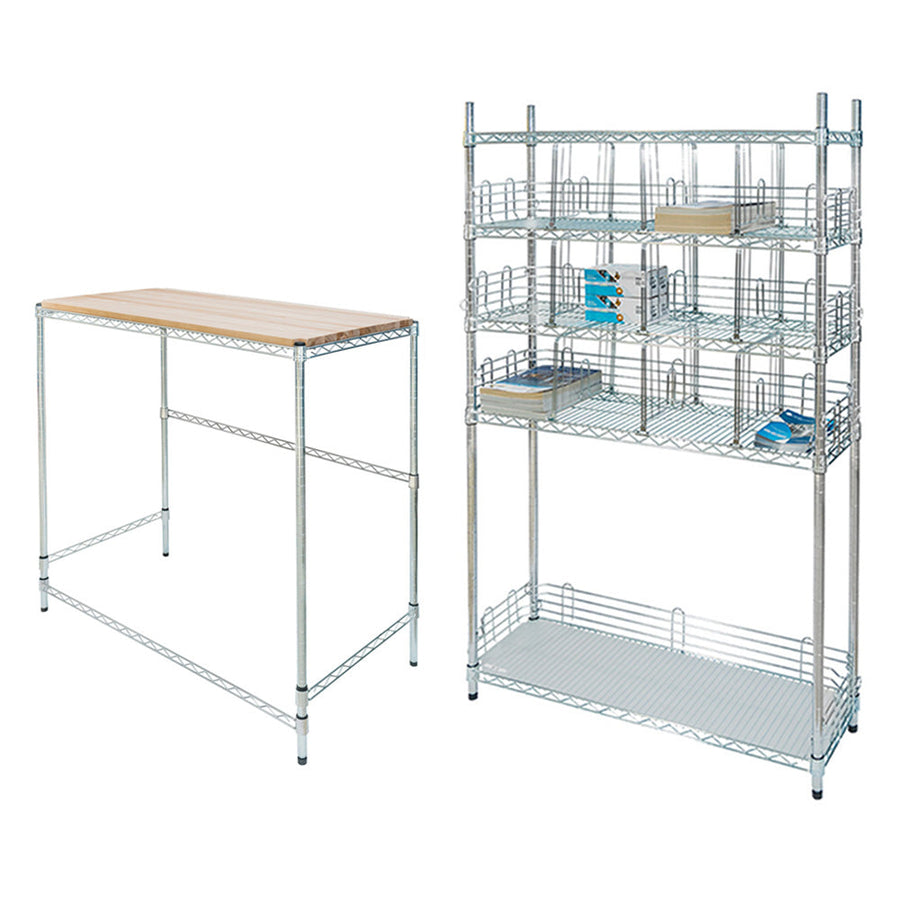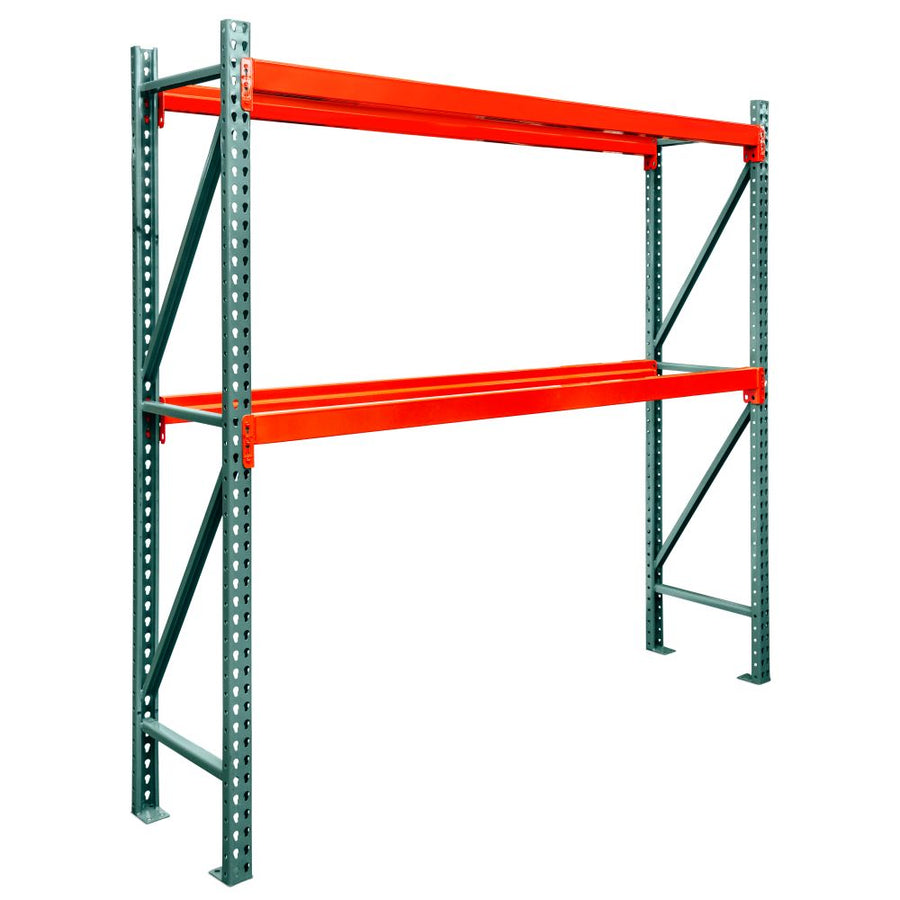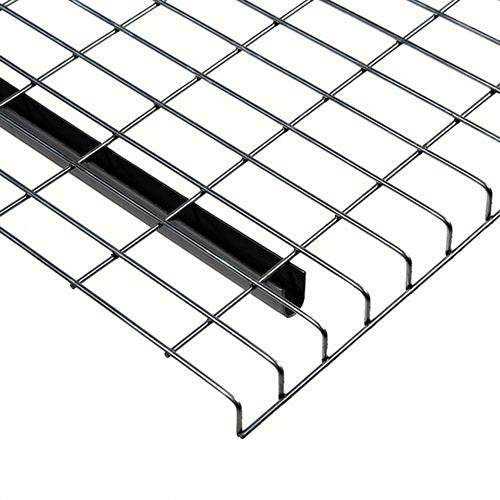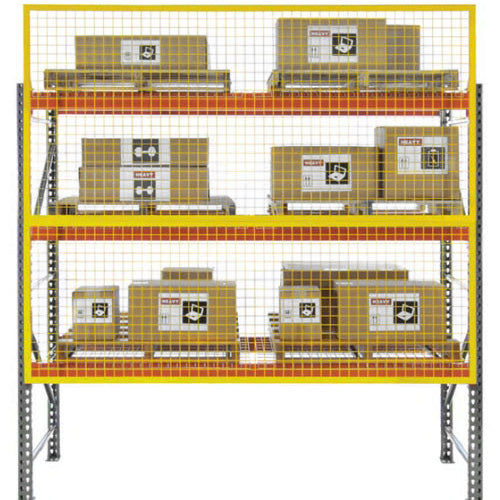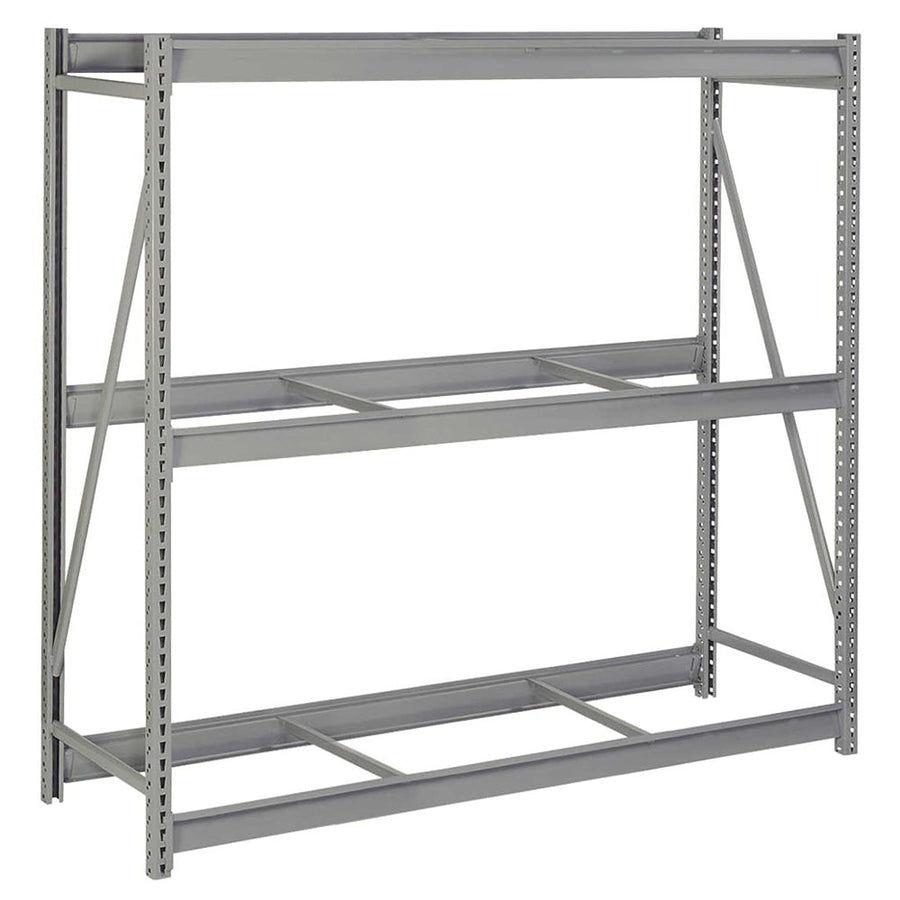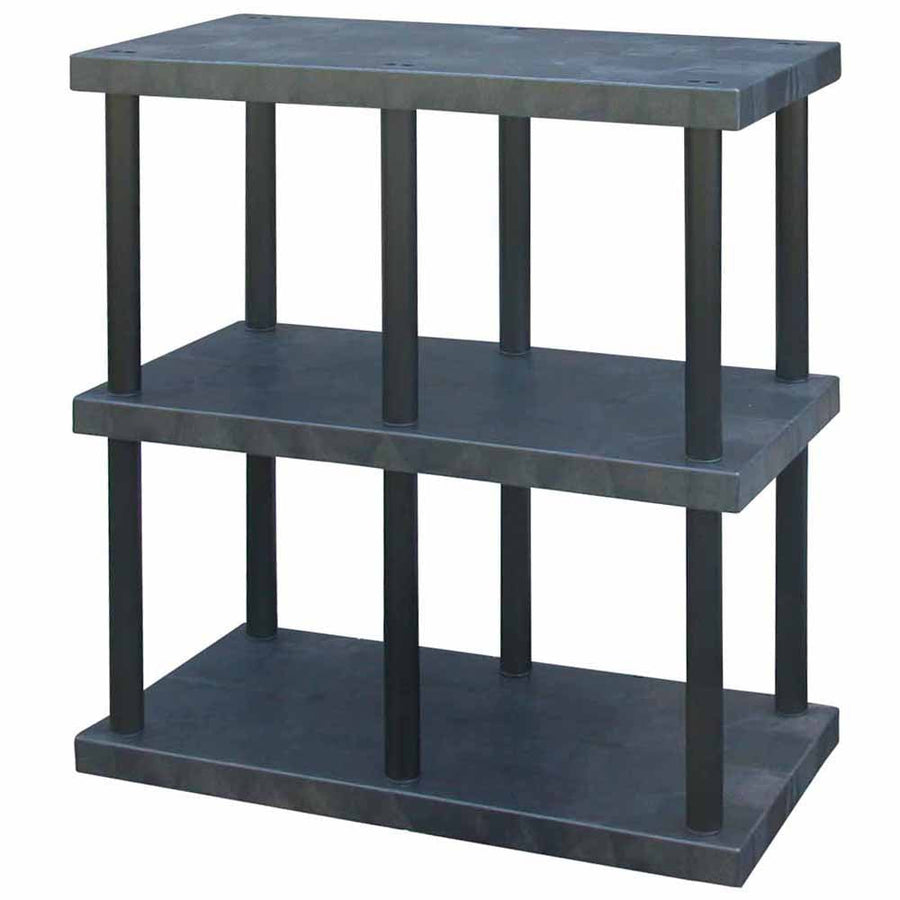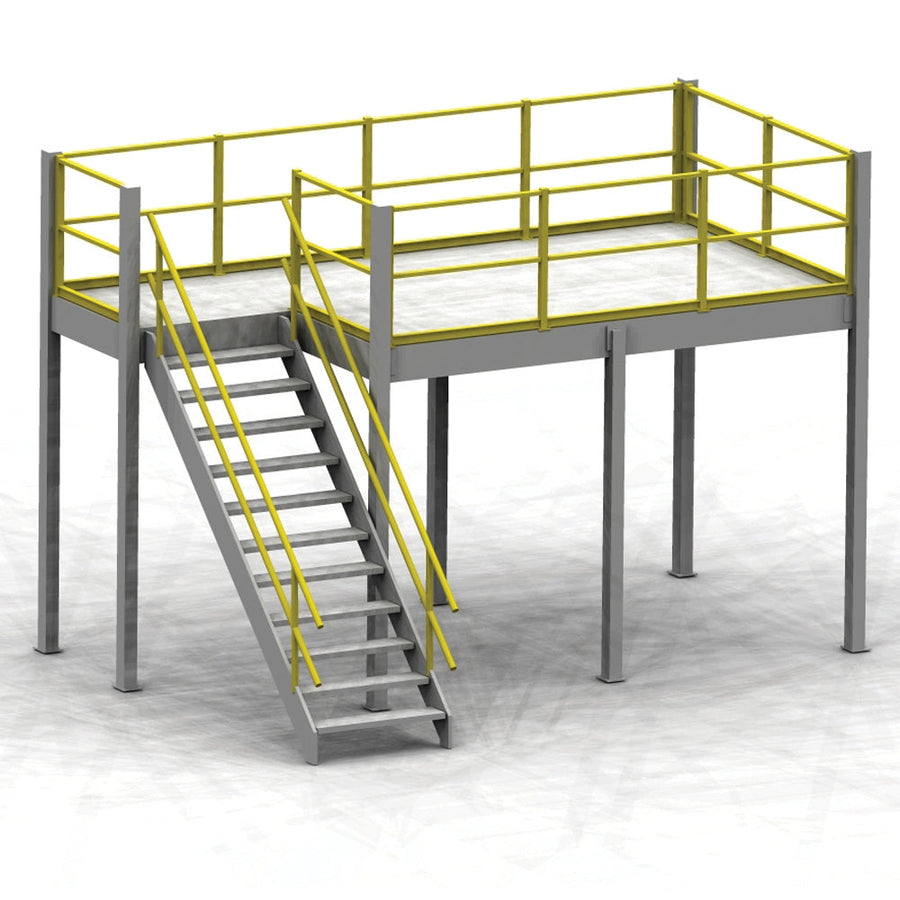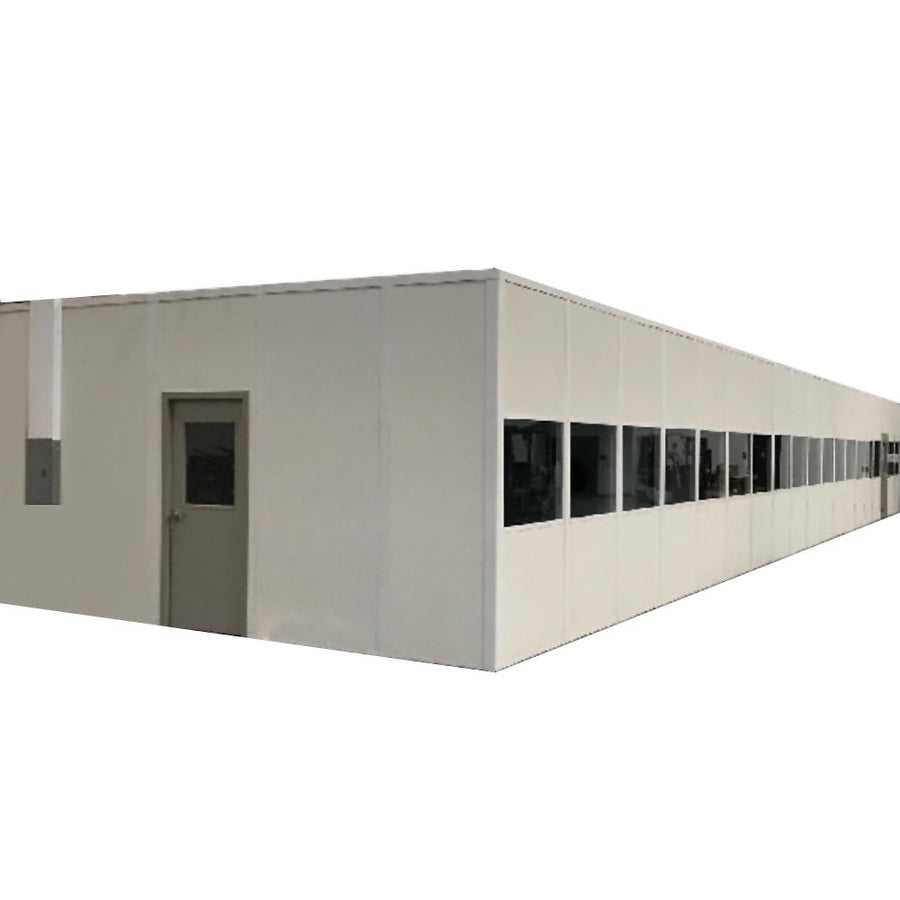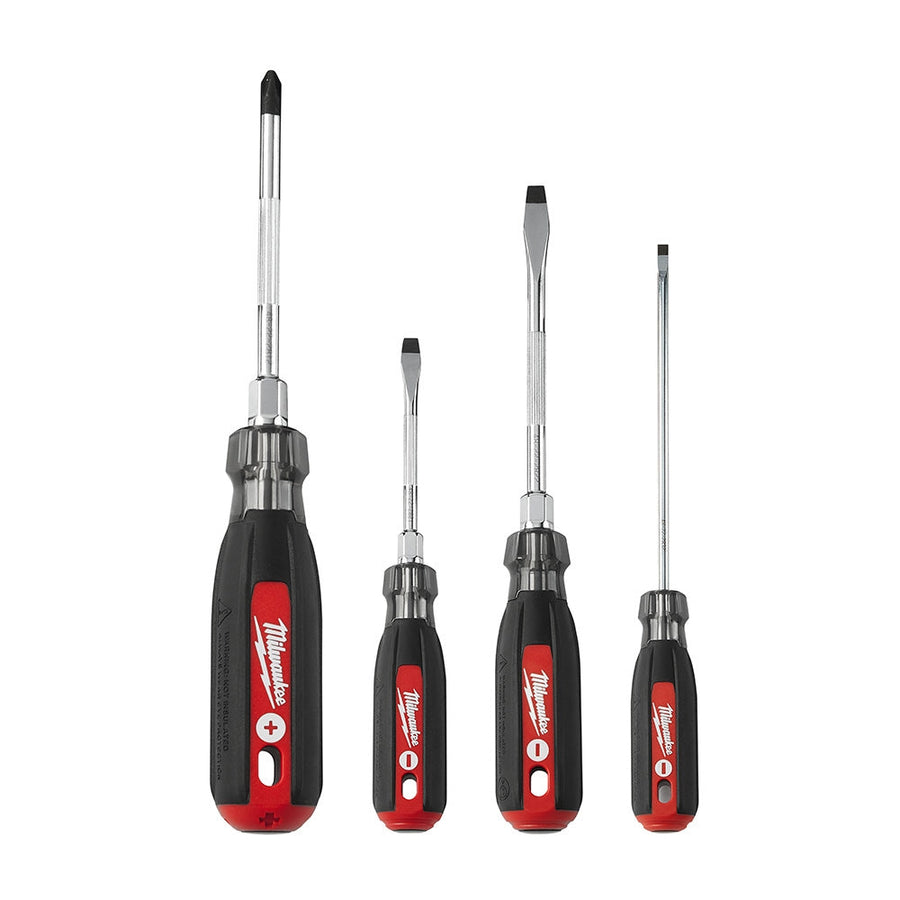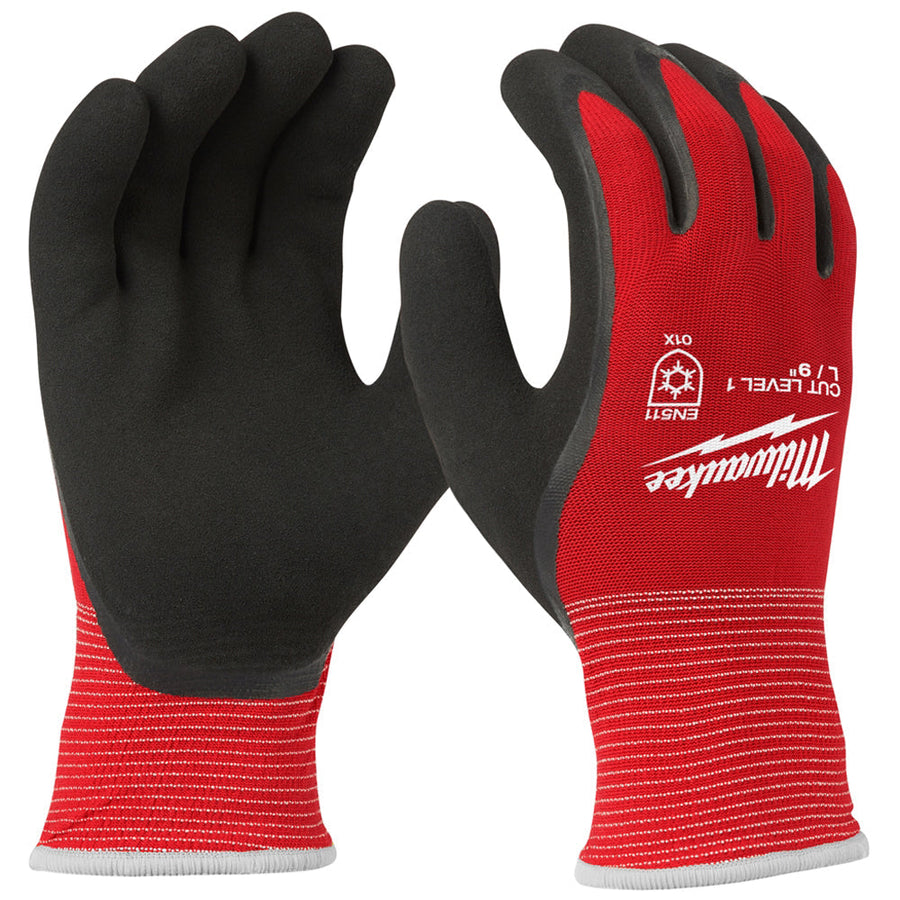Use the Proper Shelving
NSF-approved shelving has been tested by the National Sanitation Foundation and was found to be safe to use for storing things such as food and medicine. Be sure to pick the proper epoxy coating that will withstand frequent cleaning and cold and damp environments.
Lowest Shelves Should Be At Least 6 Inches Above the Ground
There are two very good reasons to keep your lowest shelves no less than 6 inches above the ground: it keeps food away from dirt and pests and it makes it easier to clean underneath the shelves.
Store Raw Meat Products on Lowest Shelves
When meat is thawed or marinating, there is the possibility for liquid to drip onto other things. Storing raw, thawed, or marinating meat on the lowest shelves can prevent that. All food should be covered while in the freezer or refrigerator, but you don’t want to take any risk for cross-contamination. And if your lowest shelves are at least 6 inches off the ground, you’ll have no problem cleaning up any potential messes. Cooked meat products can be stored on higher shelves.
Allow for Good Air Circulation
To keep your freezer or refrigerator running efficiently, you’ll need to make sure you leave plenty of room for air to circulate around items. Keep at least 3 inches of space between items so they will be able to cool evenly.
Labels, Labels, Labels
There is no such thing as too many labels when it comes to food storage. Food is something you definitely don’t want to be making mistakes with. Sometimes, one kind of food looks very much like another kind of food. And on the surface, old milk looks the same as fresh milk. Make sure everything is clearly labeled with a name and date.
Keep Produce Away from Fans
Delicate foods such as fruit and produce can be damaged if they are stored too closely to a refrigerator’s fans. Make sure these are stored away from the ventilation.
First In, First Out
The rule of “First in, first out” is one that many restaurants and stores abide by, and for good reason. It makes more sense to place older items close to the front of a freezer or refrigerator, where they can be accessed more easily before expiring, and newer items in the back, since they don’t need to be used as soon.



